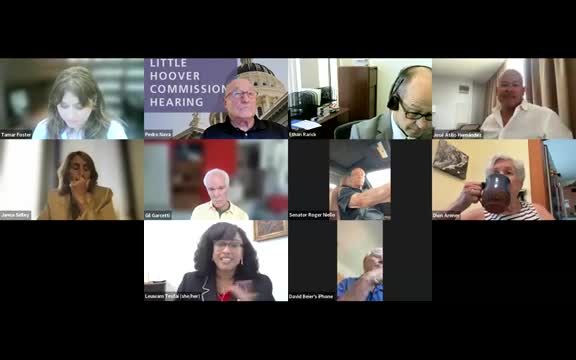California Energy Commission Implements Major Updates to Grid Planning and Permitting Processes
July 26, 2025 | Little Hoover Commission, Other State Agencies, Executive, California
Thanks to Scribe from Workplace AI and Family Portal , all articles about California are free for you to enjoy throughout 2025!

This article was created by AI using a video recording of the meeting. It summarizes the key points discussed, but for full details and context, please refer to the video of the full meeting. Link to Full Meeting
One of the key highlights was the introduction of new energization timelines, established in response to legislative measures SB410 and AB50. These timelines are designed to ensure that utility companies connect customers to the electrical grid in a timely manner, setting clear expectations for both utilities and consumers. This initiative reflects a broader commitment to streamline processes and enhance accountability within the energy sector.
Additionally, the commission has revamped its distribution planning process, which is crucial for integrating new housing and economic development projects into the existing grid. By improving data usage and fostering proactive engagement with communities and local governments, the commission aims to expedite the planning and execution of necessary upgrades. This collaborative approach is expected to facilitate faster connections and better service for residents.
Another significant development discussed was the long-overdue update to California's transmission permitting process, the first in 30 years. This update is intended to accelerate the construction of transmission lines and substations, which are essential for accommodating economic growth and integrating clean energy resources into the grid. The changes aim to remove bureaucratic hurdles that have historically slowed down infrastructure projects.
The commission also addressed internal challenges, particularly staffing shortages that have hindered the pace of regulatory proceedings. Efforts to reduce vacancy rates within the energy division are underway, ensuring that the commission is adequately equipped to handle the increasing demands of the energy landscape. Stakeholder engagement remains a priority, with the commission emphasizing the importance of allowing ample time for public input during the decision-making process.
As California continues to navigate the complexities of energy management, these developments signal a proactive approach to addressing electricity costs and enhancing the reliability of the state's power supply. The commission's commitment to modernization and stakeholder collaboration may pave the way for a more resilient and efficient energy future for all Californians.
Converted from Hearing on California Electricity Costs (Part 4) - July 24, 2025 meeting on July 26, 2025
Link to Full Meeting
Comments
View full meeting
This article is based on a recent meeting—watch the full video and explore the complete transcript for deeper insights into the discussion.
View full meeting
